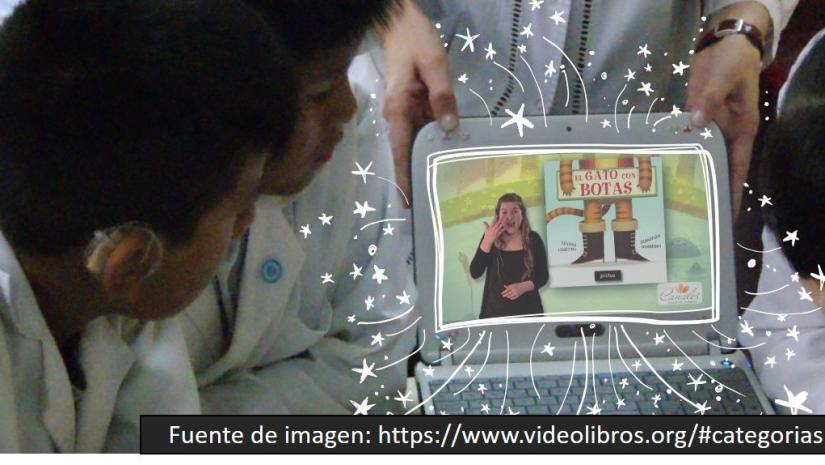Videolibros enSeñas (inSigns Videobooks)
Magicians and dragons. Detective girls. Friends in search of adventures. When children and their caregivers enter a book’s world and meet its characters, it does not only stimulate kids’ imagination, but also strengthens emotional ties at home. However, for little girls and boys with hearing impairment, this very special situation happens less frequently, because their caregivers or teachers usually do not know how to use sign language or do not have adequate materials at their disposal. Videolibros enSeñas is an innovative strategy that uses technology to promote reading among deaf girls and boys. Through videos narrated in sign language and audio in Spanish, this platform makes the stories’ content available both to children and to their hearing teachers, allowing them all to share a storytelling experience.
Problematic
Deaf boys and girls reading experiences are limited when their (in most cases, hearing) mothers, fathers, caregivers, or teachers are unable to communicate in sign language and when the care centers do not have the adequate materials for their needs. This can have a major impact on deaf children’s future lives, in particular in rural areas, when they start grammar school without having developed their language skills. In the long run, this can result in low self-esteem, social exclusion, illiteracy, unemployment, and bad emotional health in general.
Solution
This initiative consists of a free-access virtual platform with videos where books and stories are narrated in sign language – in other words, video-books. Video-books have three components: a text presenter using sign language, illustrations and animations, and a voice narrating the story in Spanish. This combination allows deaf boys and girls to connect with the story and also to share the experience with their mothers, fathers, and teachers. Video-books are made by a team of both deaf and hearing persons and are currently available in Argentine, Uruguayan, and Paraguayan sign language.
Evaluation and Impact
No information is available.
